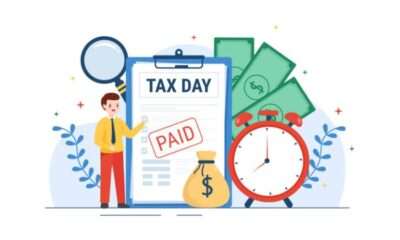Business
How to Maximize Your I-T Returns with Tax Optimization

Financial planning is heavily dependent on tax optimization. Planning ahead for taxes is essential for both individuals and businesses, as the fiscal year 2023–2024 will bring about several changes in tax regulations. Let’s talk about some practical tactics that will help you maintain compliance with the law while improving your after-tax returns.
Come along as we discuss some practical advice and tax-saving techniques. Whether you’re new to managing finances or have been doing so for some time, these are simple to comprehend and can have a significant impact on your financial plan.
Tax harvesting: A strategy for capital gains
One clever tactic for controlling and reducing capital gains taxes is tax harvesting. Investors go through this process to offset the gains from profitable investments by selling off underperforming or losing investments. This method is especially beneficial for minimizing tax obligations. For instance, a person may own stocks in several industries as part of a diversified portfolio. One of the tech stocks did very well during the fiscal year, and it gained ₹50,000 in capital. But another stock in the car industry did not do as well, and the individual lost ₹20,000. Through judicious sales of the car stock, the individual can neutralize gains from the tech stock. Net taxable capital gain is thereby reduced to ₹30,000.
Timing and knowledge of market movements are critical components of tax harvesting. Long-term financial objectives and an overall investment strategy should be taken into account when deciding whether to sell, in addition to tax implications.
Spreading capital gains across financial years
Using this technique, the tax burden in any given year can be decreased by spreading out the sale of shares or mutual funds over two fiscal years. Investors can achieve a significant tax burden reduction in a single year by doing this. Those who are about to enter a higher tax bracket especially benefit from it since it gives them the chance to better manage their taxable income. It’s crucial to remember that doing this calls for a thorough grasp of market trends and the possible effects that these sales may have on an investment portfolio.
Using NPS under corporate benefit
Employees have a great chance to maximize their savings and minimize their tax liability with this approach. Under Section 80CCD, your employer’s contribution to your NPS account is treated as a separate deduction (2). Because it exceeds the standard ₹1.5 lakh limit permitted under Section 80C, this is especially beneficial. In essence, this means you can take advantage of an extra tax benefit without going over your 80C limit.
Benefits and grandfather clauses in mutual funds
Section 112A was put into effect on April 1, 2018, and it dealt with taxes on long-term gains from selling listed stocks on the stock market. This tax is applied to sales in which the selling and purchase prices include the STT. It also includes stocks from ESOPs, gifts, and inheritances. Any profit or loss on the stocks is deemed long-term if you hold them for more than a year; if not, it is short-term. When counting stocks that have been gifted or inherited, the original owner’s date of acquisition is used. Either what you paid or the lower of your selling price or the highest market price as of January 31, 2018, constitutes the cost. Using the original owner’s cost, this rule also applies to stocks that are inherited or gifted.
You will be subject to a 10% tax on your annual long-term profit if it surpasses Rs. 1,00,000 after deducting any long-term losses.
Selecting arbitrage funds to meet immediate needs
Compared to liquid funds, arbitrage funds are more tax-efficient for short-term financial needs (6–12 months). Arbitrage funds have the advantage of being taxed as equity funds, which results in a lower tax liability on short-term gains, while gains from liquid funds are taxed according to the individual’s tax slab if held for less than three years.
In summary, strategic investment planning and a thorough grasp of the various tax-saving options are necessary for tax optimization in India. Maximizing after-tax returns requires keeping up with the latest tax legislation and seeking advice from tax experts.
-

 Gadget4 weeks ago
Gadget4 weeks agoAfter Grand Success on BLDC Ceiling Fan, Eff4 Is Launching Smart Bulb
-

 Festivals & Events4 weeks ago
Festivals & Events4 weeks agoGoogle Celebrates Cherry Blossom Season with Animated Doodle
-

 Business2 weeks ago
Business2 weeks agoPrakash and Kamal Hinduja: Driving Social and Environmental Change
-
Education3 weeks ago
Fred DuVal: University Leadership as a Critical Resource for Climate Change Research and Life-Saving Solutions
-

 Health2 weeks ago
Health2 weeks agoThe Hinduja Brothers Commitment to Global Health: Empowering Communities Across Borders
-

 Cryptocurrency3 weeks ago
Cryptocurrency3 weeks agoDesigned For The Masses: How Akasha (AK1111) Is Unlocking Crypto For The Next Billion Users
-

 Cryptocurrency3 weeks ago
Cryptocurrency3 weeks agoNexaglobal & Future World Token (FWT): Could This Be the Next Big Crypto Investment of 2025?
-

 Sports4 weeks ago
Sports4 weeks agoWomen’s NCAA Tournament 2025 Sweet 16: Full Schedule, Fixtures, Teams, Bracket, and How to Watch March Madness Basketball Match Live

























